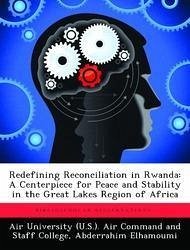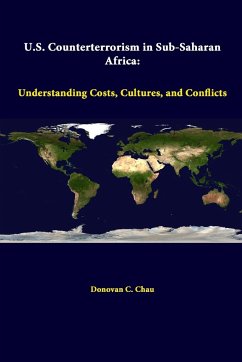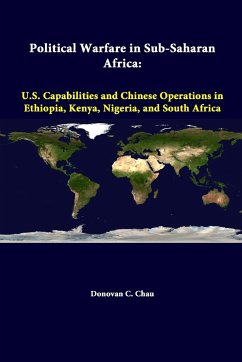Nicht lieferbar

Search for Stability in Sub-Saharan Africa an American Perspective
Versandkostenfrei!
Nicht lieferbar
The end of the Cold War changed the international security environment. It created an international environment plagued by wide spread human rights violations, the proliferation of violence, and an increase in the potential use of weapons of mass destruction, resulting in the increased involvement of the U.S. in the region. U.S. involvement in Sub-Saharan Africa has consisted of humanitarian assistance operations, peacekeeping and peace enforcement operations, security assistance, Joint Combined Exchange Training, Combined Medical Exercises, international Military Education and Training (IMET)...
The end of the Cold War changed the international security environment. It created an international environment plagued by wide spread human rights violations, the proliferation of violence, and an increase in the potential use of weapons of mass destruction, resulting in the increased involvement of the U.S. in the region. U.S. involvement in Sub-Saharan Africa has consisted of humanitarian assistance operations, peacekeeping and peace enforcement operations, security assistance, Joint Combined Exchange Training, Combined Medical Exercises, international Military Education and Training (IMET), and Exercise-related Construction projects. This monograph measures the effectiveness of these programs against the degree to which they promote and develop stability in Sub-Saharan Africa. IMET programs must be linked to the National Security Strategy (NSS) and the National Military Strategy (NMS). Failure to do so will result in a waste of Department of Defense resources. This monograph (1) defines the geographical area and its challenges to the U.S. military; (2) identifies and discusses the National Security Strategy and National Military Strategy towards Sub-Saharan Africa to include the identification of U.S. interest in the area; (3) provides a legislative overview of IMET programs; (4) identifies the combatant commands responsible for the region and what IMET programs they conduct; and (5) assesses the effectiveness of IMET programs in Sub-Saharan Africa.











